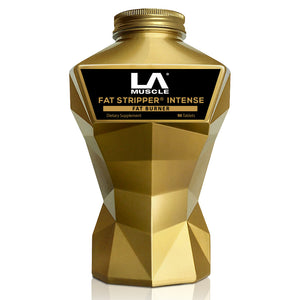
If you're looking to develop impressive biceps and a powerful back without investing in expensive gym memberships or equipment, a simple pull-up bar might be all you need. This versatile piece of equipment, easily installed in your doorway, can provide a complete upper-body workout that targets the muscles you're aiming to build. Here's how you can achieve big biceps and a strong back by progressively increasing your pull-up reps and focusing on full range of motion.
The Pull-Up: A Compound Exercise Powerhouse
The pull-up is a compound exercise that engages multiple muscle groups simultaneously. It primarily targets the latissimus dorsi (lats) in the back and the biceps in the arms, but it also recruits muscles in the shoulders, chest, and core. This makes it an incredibly efficient exercise for developing upper-body strength and muscle mass.
Benefits of Pull-Ups:- Back Strength and Width: Pull-ups are one of the most effective exercises for developing the width and thickness of the upper back, contributing to a V-shaped physique.
- Bicep Development: Pull-ups heavily engage the biceps, promoting muscle growth and strength.
- Core Stability: Maintaining proper form during pull-ups requires engaging the core, helping to improve stability and core strength.
- Grip Strength: Regular pull-up training enhances grip strength, which is beneficial for other exercises and daily activities.
Setting Up Your Pull-Up Bar
To start your pull-up journey, you'll need a sturdy pull-up bar that can be installed in a doorway. Follow these steps to ensure a safe setup:
-
Choose the Right Bar: Select a pull-up bar that fits securely in your doorway. There are various designs, including tension-mounted bars and those with brackets. Ensure the bar is rated for your weight and provides a comfortable grip.
-
Install Properly: Follow the manufacturer's instructions to install the pull-up bar securely. Test the stability of the bar before starting your workouts to prevent accidents.
-
Position the Bar Correctly: The bar should be high enough to allow you to hang with straight arms and a slight bend in your knees. This position will enable a full range of motion during your pull-ups.
Mastering the Pull-Up: Progression and Technique
Once your pull-up bar is ready, it's time to master the exercise through a progressive approach and proper technique.
Step-by-Step Pull-Up Technique:-
Grip the Bar: Stand under the bar and reach up, grasping it with an overhand grip (palms facing away) slightly wider than shoulder-width apart. You can also use an underhand grip (palms facing you) to target the biceps more directly.
-
Hang with Straight Arms: Start from a dead hang position, allowing your arms to fully extend while keeping your shoulders engaged. Engage your core and pull your shoulder blades down and back.
-
Pull Up: Initiate the pull by driving your elbows down and back. Focus on using your back muscles to lift your body, keeping your chest up and your shoulders away from your ears.
-
Full Range of Motion: Pull your chin above the bar, squeezing your shoulder blades together at the top of the movement.
-
Controlled Descent: Lower your body back to the starting position with control, fully extending your arms to complete the repetition.
Building Repetitions and Strength
To maximize the benefits of pull-ups, it's essential to progressively increase the number of repetitions you can perform. Here's a simple plan to help you build up your pull-up strength and endurance:
Beginner's Plan:-
Assess Your Starting Point: If you can do only a few pull-ups, that's okay. Start with what you can manage.
-
Frequency: Aim to perform pull-ups three times per week, with at least one rest day between sessions.
-
Repetition Goal: Begin with a goal of performing 2-3 sets of as many reps as you can manage with good form.
-
Incremental Progress: Each session, try to add one more repetition to each set. Consistency is key, and small increases will add up over time.
-
Assisted Pull-Ups: If you cannot perform a full pull-up yet, use assistance bands or a step stool to help reduce the weight you need to lift.
-
Volume and Variations: As you become more comfortable with pull-ups, increase the volume by adding more sets or incorporating different pull-up variations such as wide-grip, narrow-grip, and commando pull-ups.
-
Weighted Pull-Ups: Once you can perform multiple sets of 10-12 reps, consider adding resistance with a weight belt to continue challenging your muscles.
-
Eccentric Training: Focus on the lowering phase of the pull-up by taking 3-5 seconds to lower yourself back to the starting position. This emphasizes muscle control and strength development.
Ensuring Full Range of Motion
Achieving a full range of motion during pull-ups is crucial for maximizing muscle engagement and growth. Here are some tips to ensure you're getting the most out of each rep:
- Proper Form: Avoid using momentum or swinging your body to complete the pull-up. Maintain control throughout the movement.
- Full Extension: Allow your arms to fully extend at the bottom of each rep to ensure your muscles are working through their entire range.
- Chin Above the Bar: Pull high enough so that your chin is above the bar at the top of the movement, ensuring full contraction of the back and biceps.
With dedication, consistency, and a simple pull-up bar, you can effectively build bigger biceps and a stronger back. By progressively increasing your pull-up repetitions and focusing on a full range of motion, you'll achieve impressive results in your upper body strength and appearance. Remember to prioritize proper form, listen to your body, and celebrate each milestone on your journey to achieving your fitness goals.


























